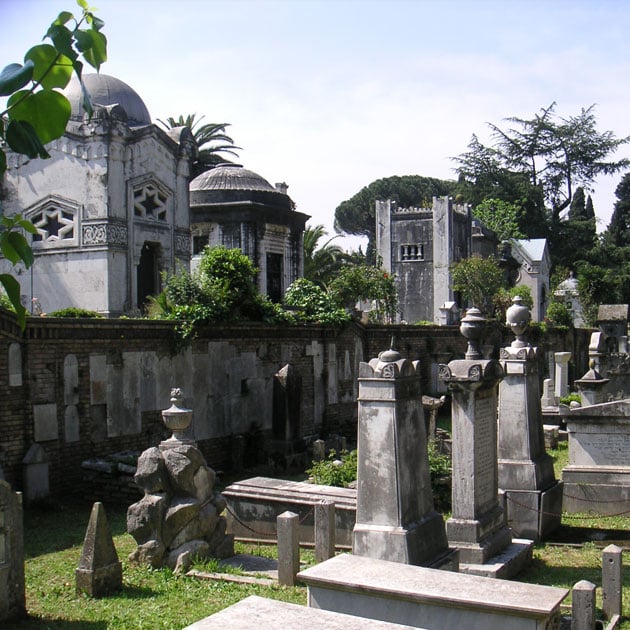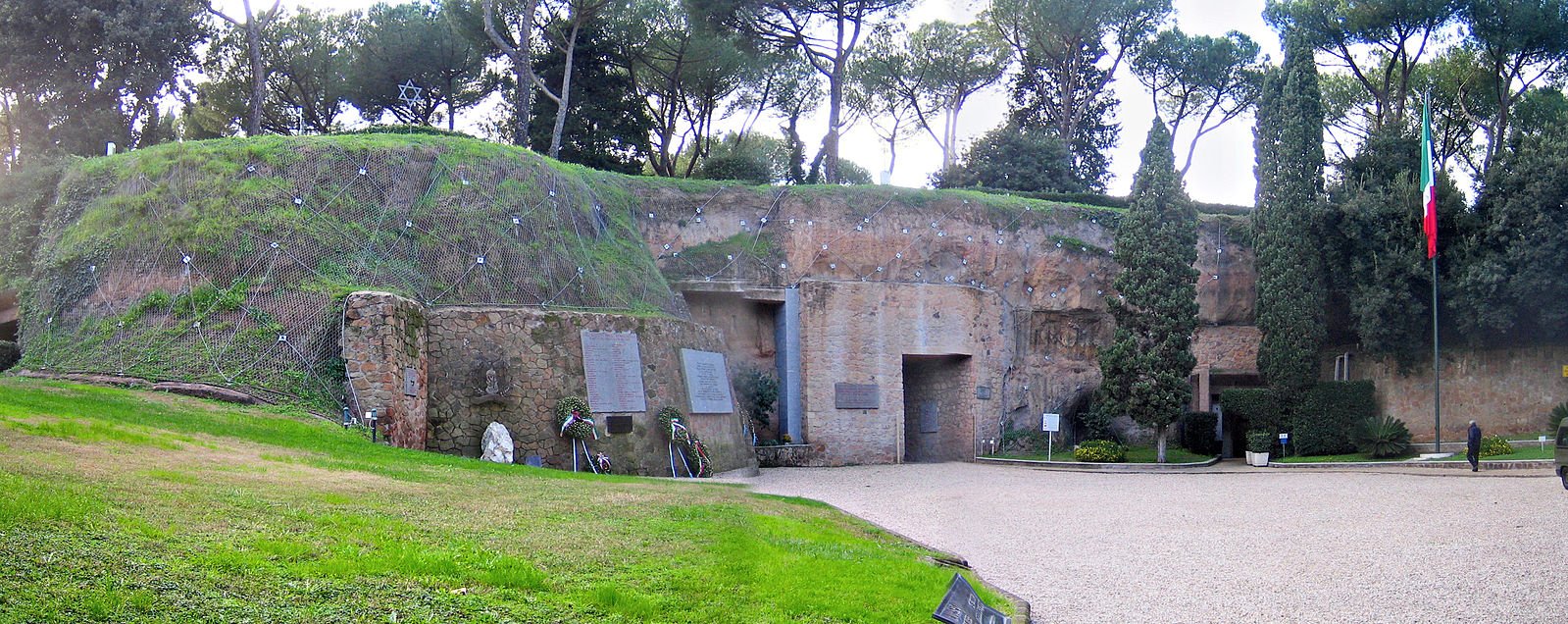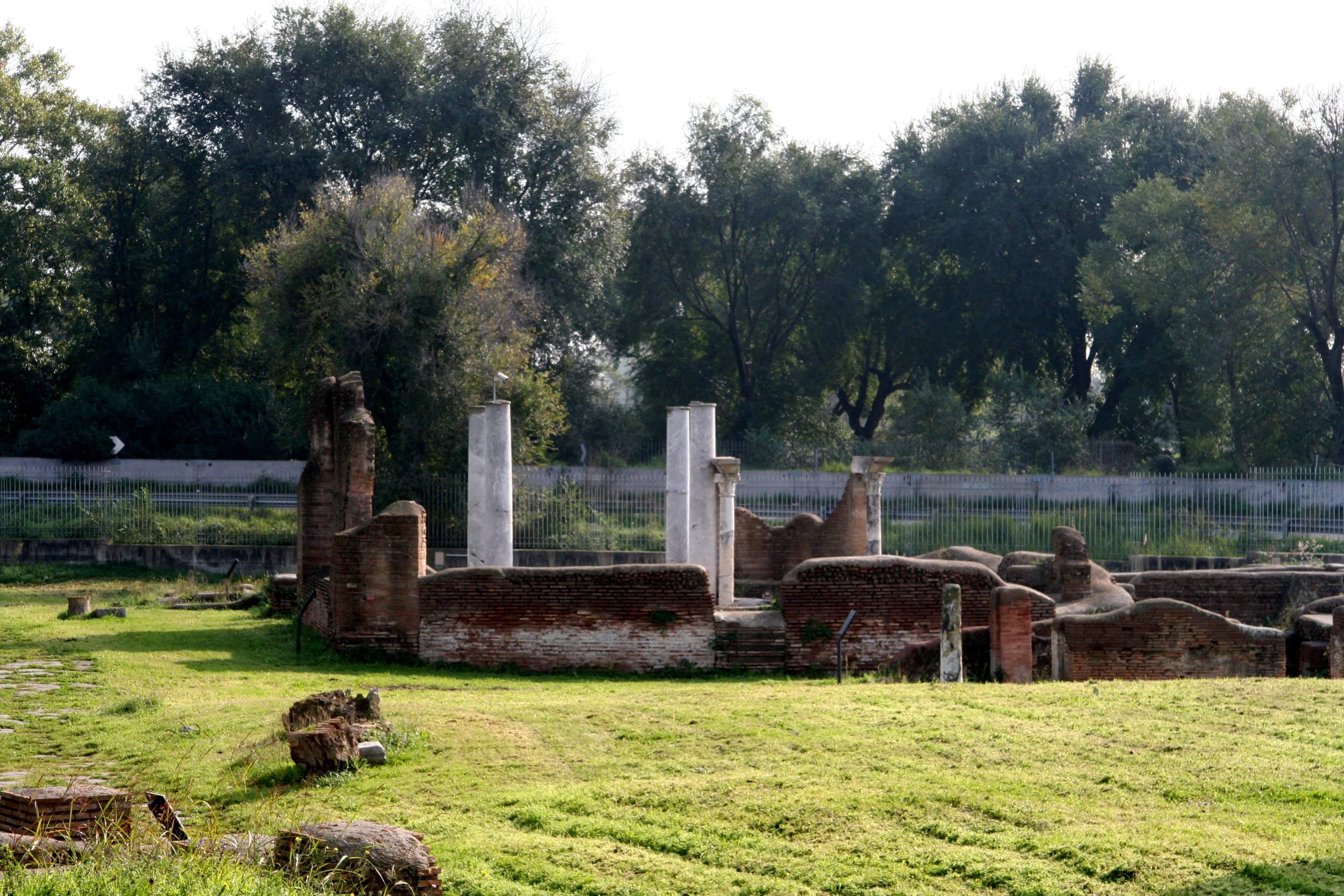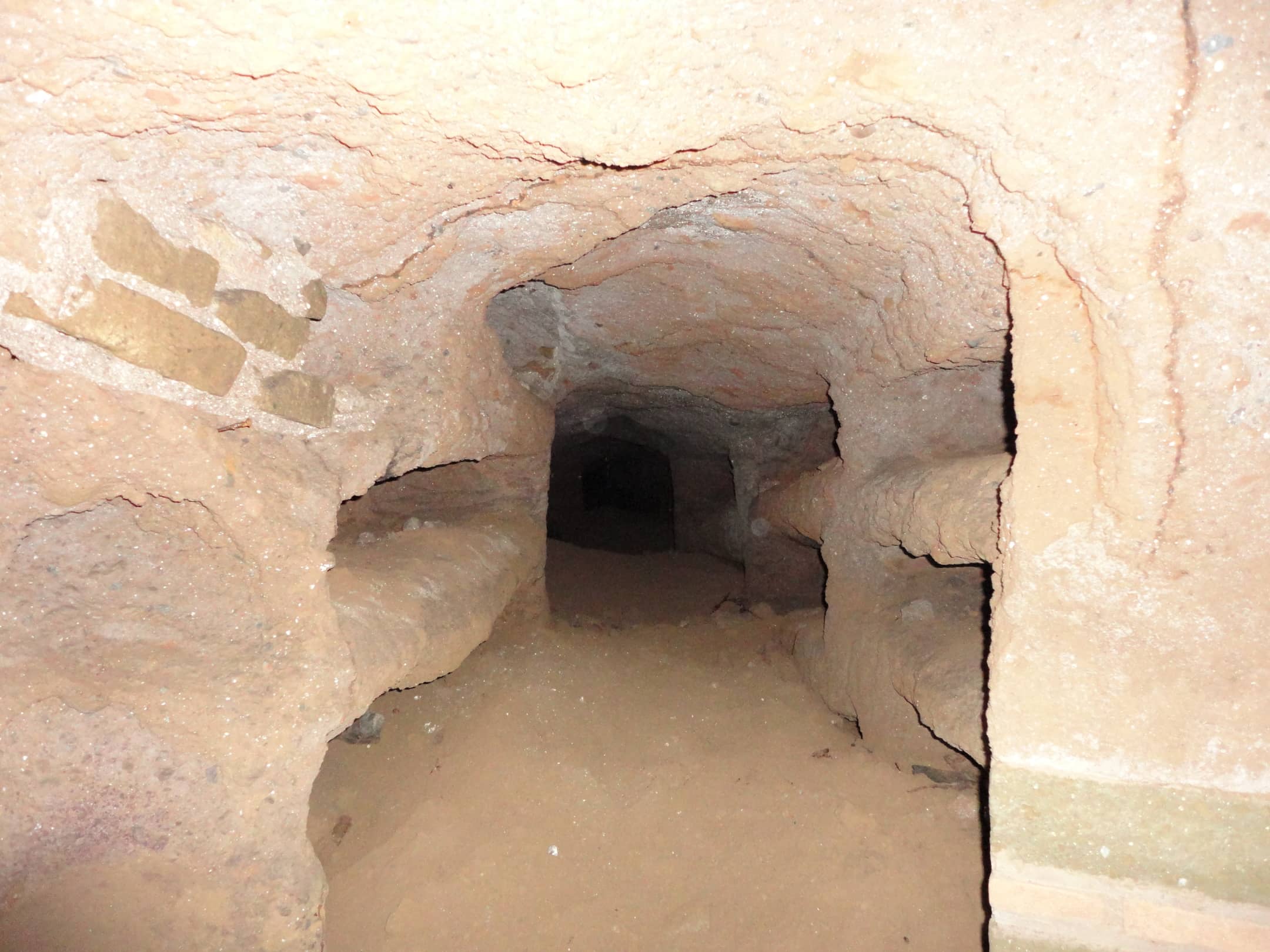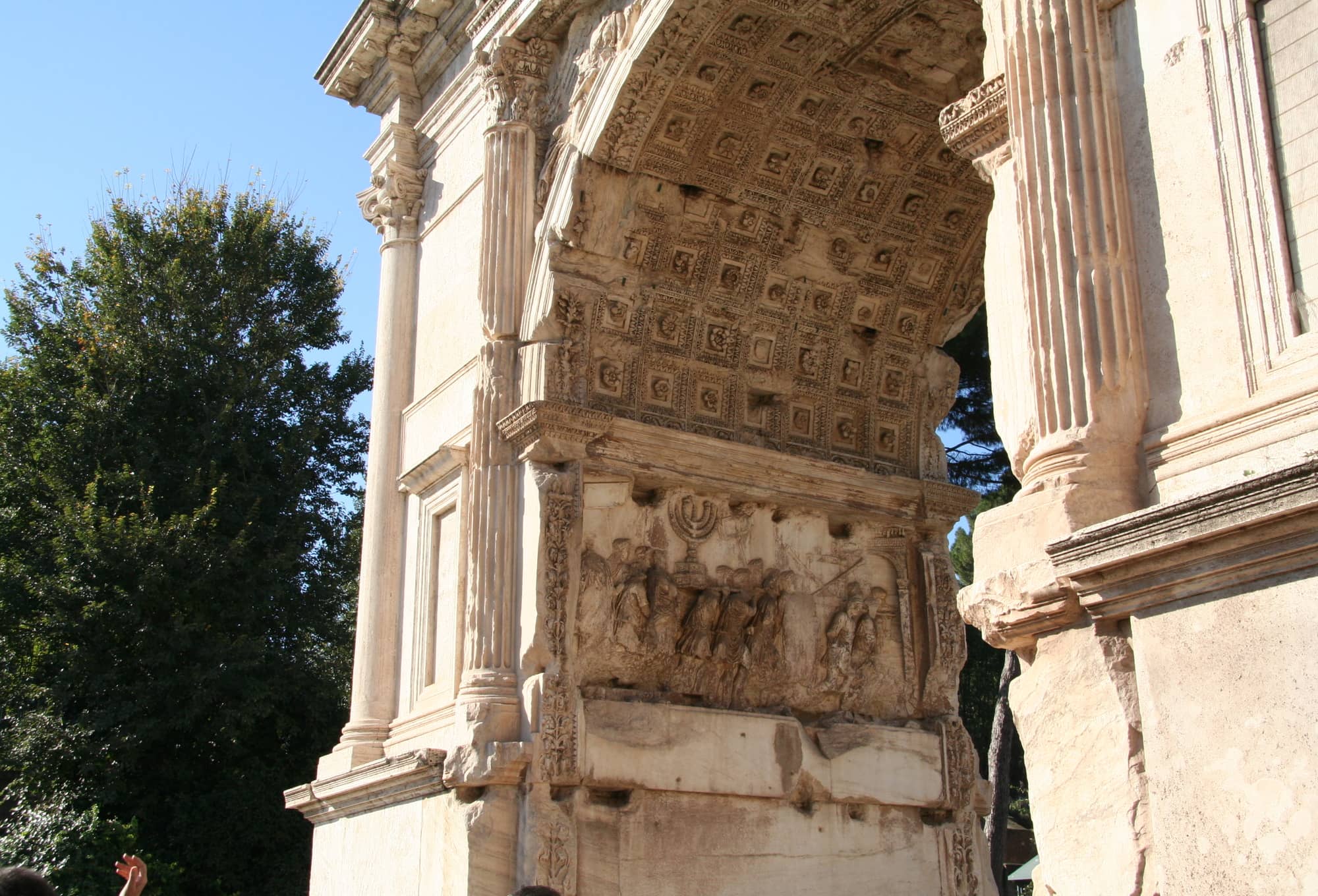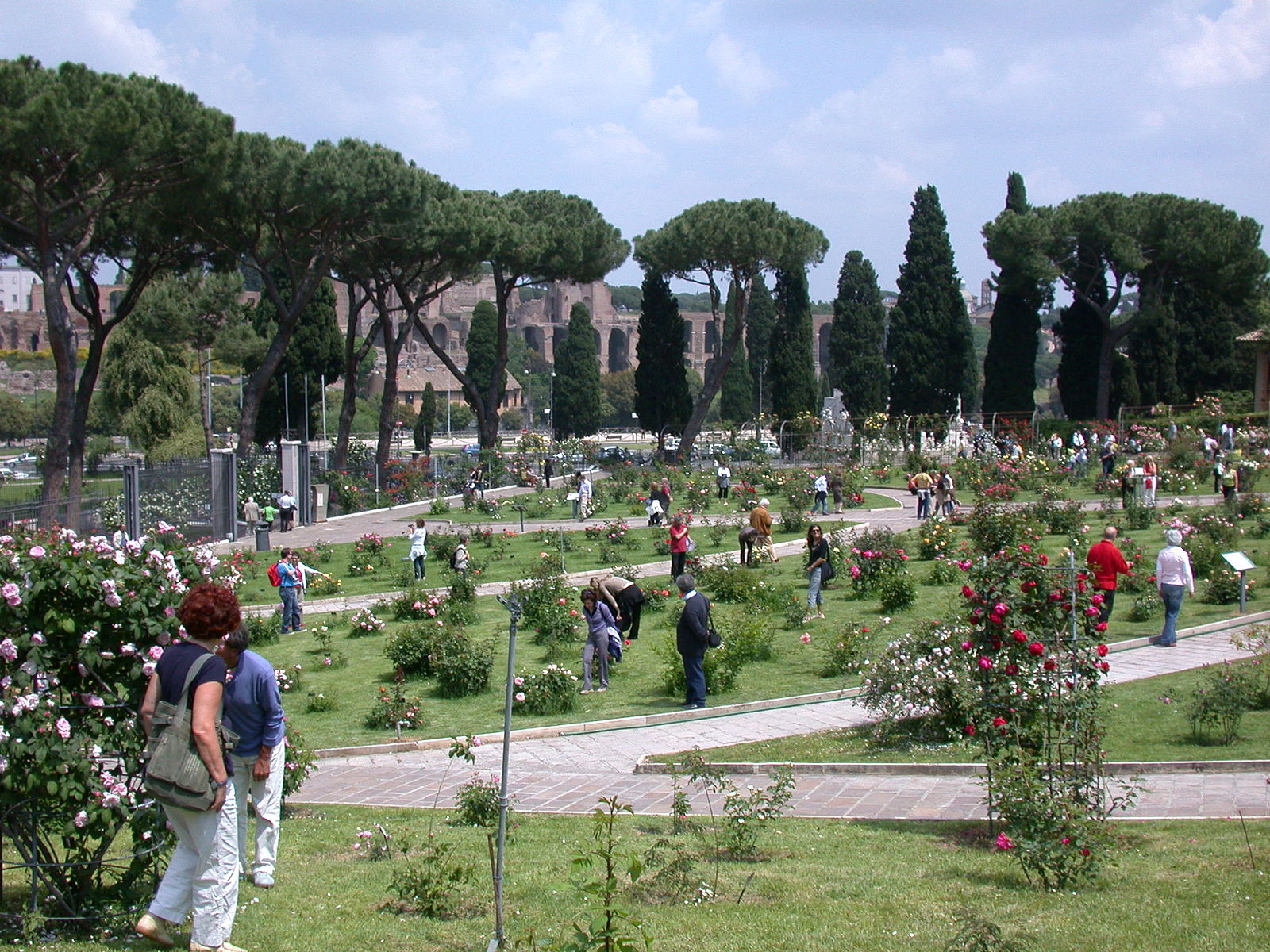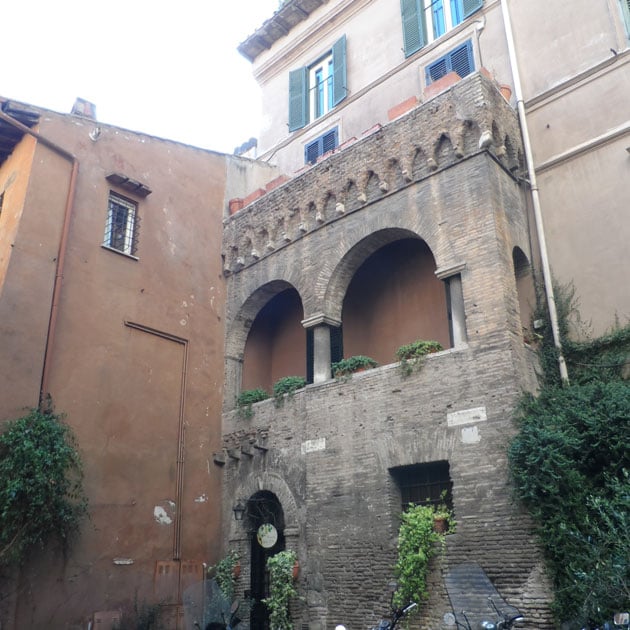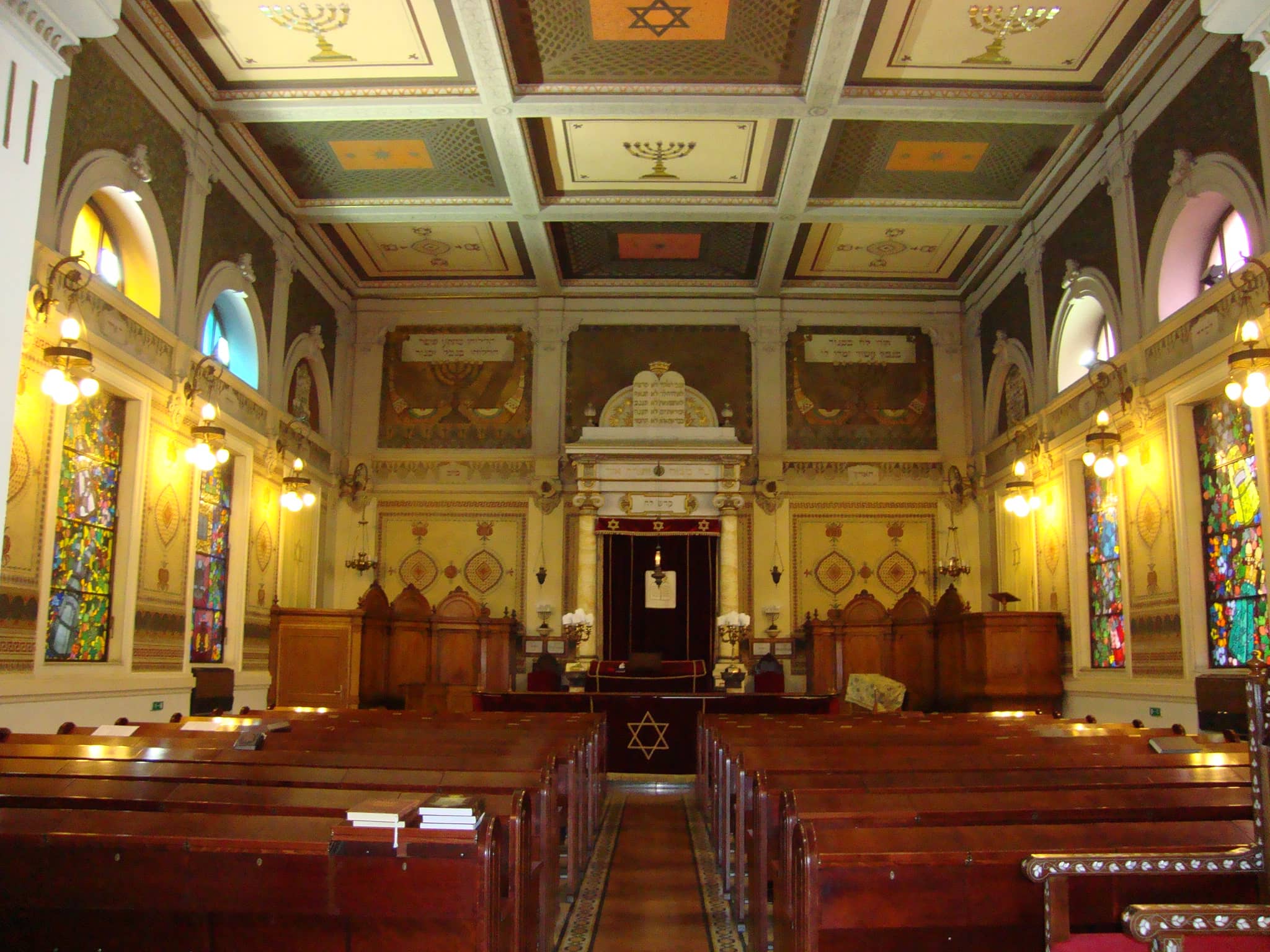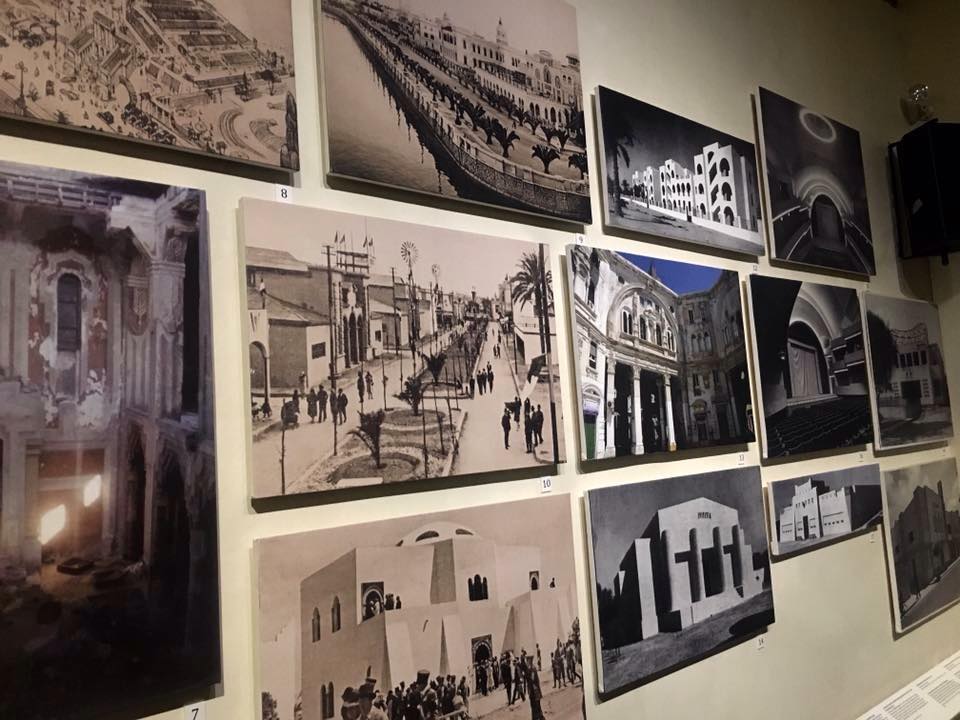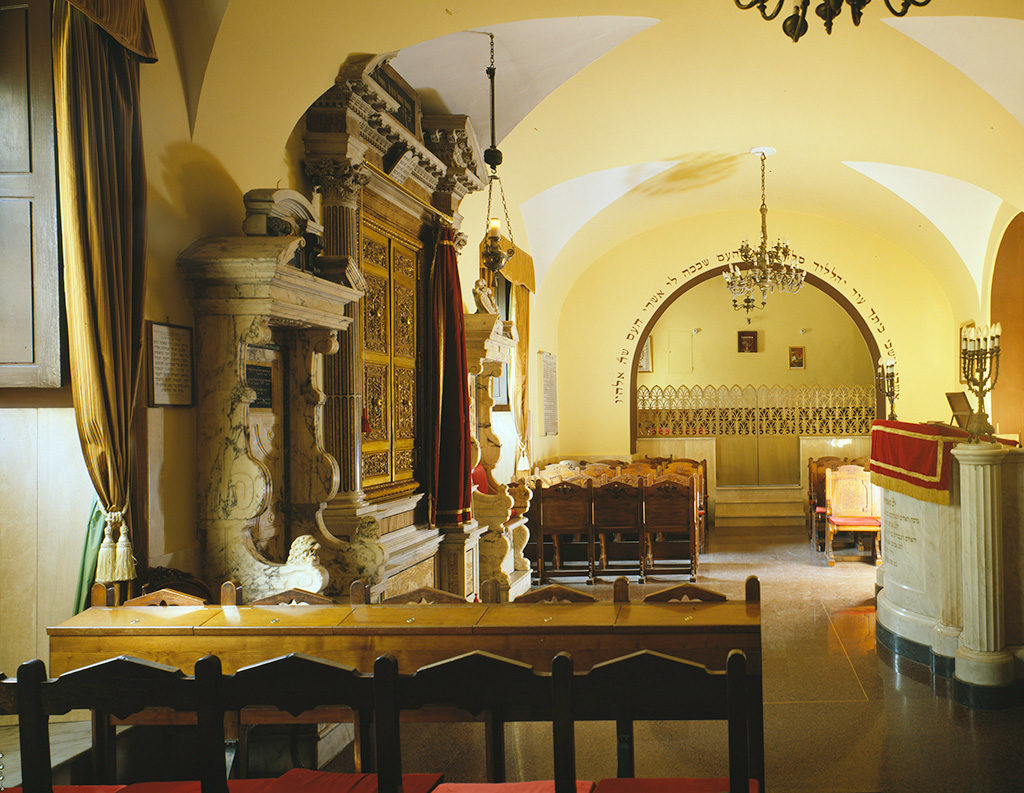The Verano Cemetery was established during the Napoleonic rule (1808-1814), and has a Jewish section since 1895. The entrance on Via Tiburtina joins the avenue that leads to the burial chapel (tempietto). On 16 October 1952, a stone monument commemorating Roman deportees by architect Angelo Di Castro was placed in front of it. On the back the Memorial to the Jews who died in Libya, by Eddy Levy and Massimiliano Beltrame, unveiled in 1977.
Numerous funerary monuments are noteworthy. They illustrate the changing social condition of the local Jews and are a key to the understanding of the prestige attained by various families. A world away from the more modest, austere graves of Jewish tradition, the Jewish cemetery is filled with decorations and figures, some of an allegorical nature, some depicting the deceased themselves. In line with the design of the time, there are eclectic tombstones with historic and oriental touches; sometimes one can make out references to the architecture of the new synagogues, such as in the Campos family chapel, designed by 1909 by Marcello Piacentini with clear references to the Tempio Maggiore.
Archives: Directory listings
Directory listings
Fosse Ardeatine Memorial
The place is associated with the years under Nazi occupation, and commemorates the massacre by the SS as retaliation for the Partisan attack in Via Rasella when thirty-two German soldiers were killed. On the evening of March the 24th, 1944, three hundred and thirty-five people were rounded up from the city’s prisons – among them, seventy-five Jews – and taken to Via Ardeatina, where they were slaughtered. The underground passages were then blown up to conceal traces of the massacre and the bodies were retrieved only after the war.
In the large area at the centre of the quarry stands the sculpture I Martiri (“The Martyrs”) by Francesco Coccia, made to commemorate the victims, represented by the figures of an artisan, an intellectual and a teenager, bound by the wrists (1950). An opening in the quarry wall leads to the route around the tunnels, and then to the Memorial built in 1949: it is a large tombstone, a vast cement slab held up by six pillars which covers the graves, all identical and in rows.
Image attribution: antmoose, CC BY 2.0
Ostia Antica Synagogue
The ruins of the Ostia synagogue, discovered in 1961, are a crucial piece of evidence, telling us as much about the Jewish presence in the region as they do about the most ancient Jewish diaspora organisation. The primitive section dates from the 1st century, when the port built by Emperor Claudius turned the city into a multi-ethnic trading centre. The building had many rooms, and was later renovated and enlarged, particularly in the 3rd and 4th centuries. The sanctuary was accessed through a vestibule with three entrances and an intermediate passageway with tall Corinthian columns. The tevah is thought to have been on the slightly curved wall at the back of the room; on the opposite side you can still see the 4th century apse which made up the Aron, framed by an aedicule originally with trabeated columns. Decorative bas-reliefs with traditional subjects are at the top of the projecting ledges are: the menorah, the shofar, and lulav.
Additional rooms in the space near the vestibule date from later transformations, including a kitchen with an oven and sunken compartments for provisions, and a large room with benches along the walls, perhaps used as guest quarters.
Catacombs of Vigna Randanini
The Vigna Randanini catacomb on the Via Appia is the only site currently open to visitors. The underground or hypogeal area is now accessed via a passageway which dates to the period between the 1st century B.C. and the 1st century A.D. The arcosolia (chambers with lowered vaulted ceilings) are thought to date from a later period, as is the black and white mosaic flooring.
Inside the catacomb loculi or tombs arranged along the walls, and kokhim, tombs that are perpendicular to the walls of the gallery, dug just beneath the floor, typical of the Middle East. Those at Vigna Randanini are the only example of such tombs in the Roman Jewish catacombs.
Along the various galleries, other burial spaces are organized into cubicula (chambers for multiple burials). Richly frescoed, only some of them show symbols from the Hebrew tradition; indeed, some of them, decorated with motifs commonly found in other Roman catacombs, originate from a period prior to their use by the Jewish community (3rd – 4th centuries), and are thought to have been incorporated after they were no longer in use.
Arch of Titus
The majestic triumphal arch is dedicated to the Emperor Titus and was constructed in the years following his death in 81 CE. The monument celebrates his victory over Jerusalem in 70 CE. and the annexation of Judaea to the Roman Empire.
A depiction of the divinization of the emperor, shown flying upon an eagle can be seen at the centre of the coffered soffit. On either side of the archway are reliefs with scenes of his triumph. On one side they show the entrance of Titus, and his coronation, surrounded by allegorical figures; on the other, the procession going through the triumphal arch, carrying the spoils looted from the destroyed Temple: among them the menorah, the large seven-branched candlestick stands out.
Roman Jews would always refuse to walk under this archway. It was only after the birth of the State of Israel that they crossed it, but this time in the opposite direction to that of the triumphal procession.
Municipal Rose Garden
The Municipal Rose Garden at the foot of the Aventine was once the Jewish cemetery, prior to its transfer to the Campo Verano.
The previous cemetery at Porta Portese had been abandoned, having been fenced off and reduced in 1587 and eventually seized. A new site at the foot of the Aventine Hill was purchased, expanded several times, and remained operational from 1645 to 1895.
However, in 1934 the Jewish Community was forced to sell the now unused burial ground because of the plan to free the Circus Maximus and open up Via di Valle Murcia. Three hundred and seventy-two tombs and several monuments from the more recent section were transferred to the Campo Verano.
In memory of this place’s previous identity, the pathways of the Rose Garden were laid out in the shape of a menorah, the concentric seven-branched candlestick described in the Bible as being among the ritual ornaments Temple of Jerusalem. The Community also decided to honour the memory of the former Jewish cemetery by placing a stone with the Tables of the Law near the entrance.
Ancient Synagogue of Trastevere
For a long time, Trastevere was the focal point of the Jewish community in Rome. Then, in the Middle Ages, it gradually shifted to the Sant’Angelo District, where the ghetto was later built.
The building at 14, Vicolo dell’Atleta is commonly identified as the site of the old medieval synagogue in the Trastevere area. The building has a brick façade with a wide two arched loggia, surmounted by a cornice with small arches resting on ledges. The column of the loggia bears an inscription in Hebrew with the name Nathan Hai. This might refer to Rabbi Nathan ben Jehiel, who is thought to have had a mikveh or ritual bath and a synagogue built in Trastevere in the late 11th and early 12th centuries. One of the best-known works by Rabbi Nathan ben Jehiel is his Sefer Ha‘Arukh (literally ordered [words]), a Talmudic dictionary of great importance within sacred literature.
Di Castro Synagogue
A new synagogue was built in 1914, a few years after the large Tempio Maggiore was opened. The aim was to cater for a Jewish population that by then lived throughout the city, having left the ghetto area after Emancipation, or having come from other Italian cities at the time.
The hall bears some of the synagogue features from the Emancipation especially as to the lay-out and various decorative elements.
The tevah and Aron are brought together in a single space, enclosed by a balustrade. They are at the end of the hall, in line with the entrance and facing pews in two parallel rows along the centre. The women’s gallery is above the entrance.
The Oratorio Di Castro also has furnishings which previously belonged to the Cinque Scole: the candelabra on the tevah, the ner tamid and the lamps hanging in front of the Aron are all from Scola Castigliana. The stained glass windows are modern and were made by Aldo Di Castro in 1991.
Since 1972 the basement rooms have housed an Ashkenazi rite synagogue, designed by architect Angelo Di Castro. The candelabra and the gilded wooden doors of the Aron are also from Scola Castigliana.
Jewish Museum of Rome
A first exhibition space was created in 1960, and has been expanded and renewed several times since. A complete scientific overhaul ended in 2005 led to its current organisation, in the basement of the Tempio Maggiore.
The museum describes the history and nature of the Jewish presence in Rome, using testimonies and witnesses: liturgical furnishings, manuscripts, incunabula, historical documents and stone fragments. It focuses on the artistic quality and extent of the collection of ceremonial art passed down from the Cinque Scole, a collection built up over the centuries thanks to donations by families wishing to demonstrate their bond with the synagogue they belonged to.
The exhibition itinerary will take visitors through seven rooms, labelled according to their content and main themes: “La guardaroba dei tessuti” (“The fabric wardrobe”), “Da Judaei a Giudei: Roma e i suoi Ebrei” (“From the Judaei to Judeans: Rome and its Jews” – the settlement, from their origins to the establishment of the ghetto), “Feste dell’anno, feste della vita” (“Feasts of the year, feasts of life”), “I tesori delle Cinque Scole” (“The treasures of the Cinque Scole”), “Vita e Sinagoghe nel ghetto” (“Life and Synagogues in the Ghetto”), “Dall’Emancipazione a oggi” (“From Emancipation to the present day”), and “L’ebraismo libico” (“Libyan Jewry”). The outer space in front of the entrance houses the “Gallery of Antique Marbles”, with important stone artefacts dating from the sixteenth to the nineteenth century, from the Cinque Scole and the Confraternities of the Ghetto.
The Museum has also an access for wheelchair users and includes a guided tour of the Tempio Maggiore and the Tempio Spagnolo.
There is a Bookshop selling books and souvenirs close to the ticket office.
Spanish Temple – Tempio Spagnolo
A small Sephardic (Spanish) rite temple is in the basement of the Tempio Maggiore. This is a legacy of the ghetto’s Scole, where versions of this rite were observed. Originally located elsewhere, it was transferred here in 1932. The furnishings of the Cinque Scole restored and brought here In 1948.
The hall has an elongated rectangular shape and the bi-focal layout of the Ghetto Scole: the Aron and tevah face each other at the centre of opposite walls – in this case along the longer sides -, while the pews are arranged to face them.
The Aron in polychrome marble comes from Scola Nova; the original tympanum had to be removed because of the height of the ceiling, and at its sides the seats belonging to the tripartite structure of the Aron from Scola Catalana made between 1622 and 1628. The tevah comes from the Scola Castigliana: it was donated in 1851, and is the last, large marble item purposely made for the Cinque Scole.
